What 2017 Mobius told about mobile development
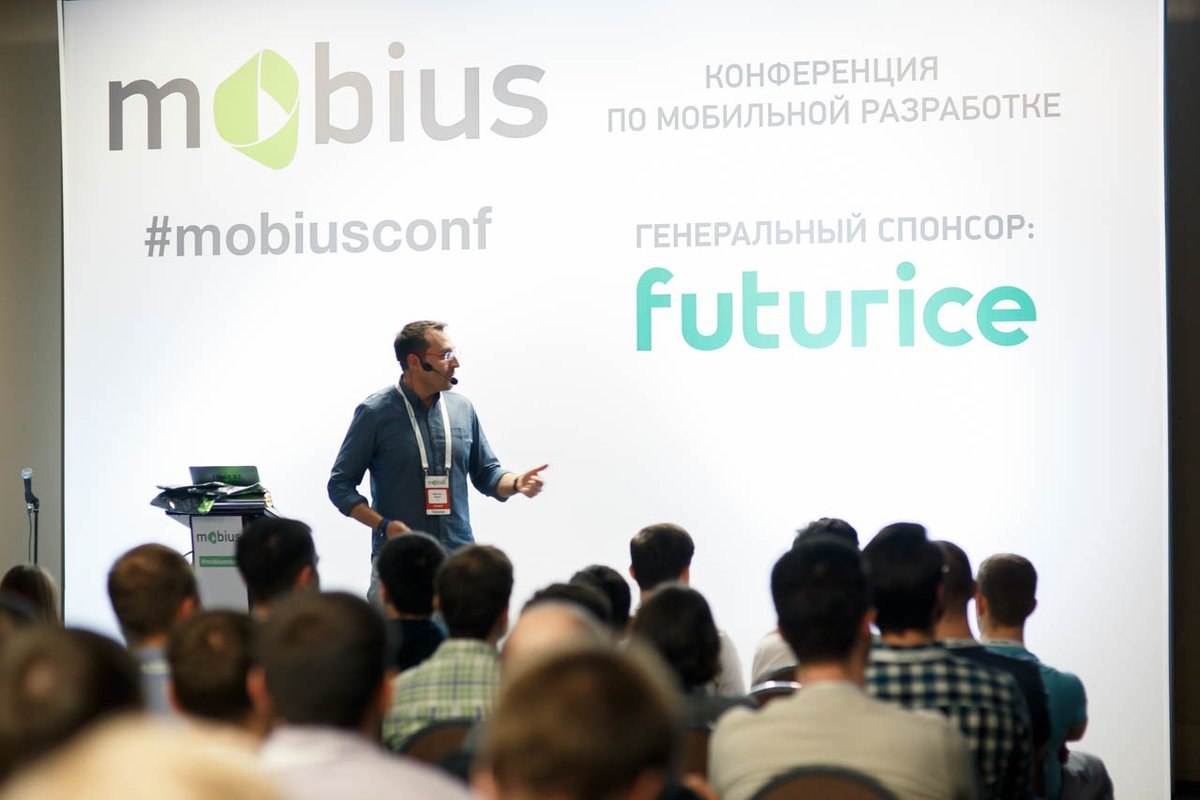
Listening to the reports at the IT conference, you can not only learn a lot of specific information from each, but also see a more general picture: together, the reports indicate what the industry is currently living and interested in.
Mobius 2017 took place in St. Petersburg last week - how was the event, and what general conclusions about mobile development in 2017 can be made from what was told there?
The conference had several differences from last year . First, it first took place in two days, not one. At the same time, we did not set the goal of “exactly twice as many reports”: we preferred this to long breaks, which helped to properly try questions from the speakers after their performances, and the audience actively used this opportunity.
')
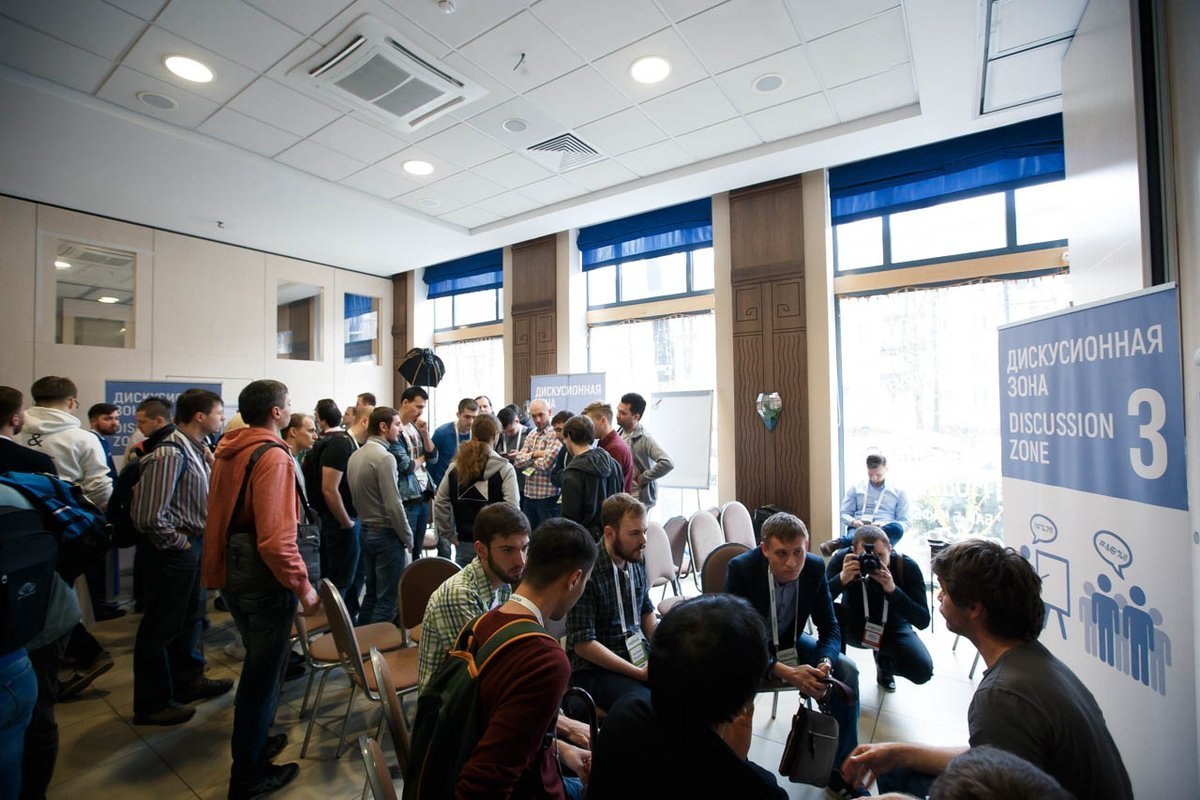
Secondly, this time there was an unexpectedly large geographic spread of the audience. If to simplify a little, only a third of the spectators at the conference were directly from St. Petersburg, another third from Moscow, and the remaining third from regions. And an unexpected detail was the presence of several people from Japan who decided to combine a visit to Russia with a conference visit (since of the three parallel reports, almost always one was English-speaking, even without knowing Russian they did not get bored).
Thirdly, the online broadcast has changed: long breaks give those present at the conference an opportunity to have a good chat, but what should the broadcast audience do? For them, during the breaks they made inclusions from the lobby and interviews with speakers. Recall that on the second day of the conference the broadcast of one hall (and breaks) was conducted openly on YouTube - you can see for yourself how it all happened.
The conference was opened by keynout of Mikhail Samarin, just about the trends of mobile development, which he observes while working at Futurice (on the work of the company we interviewed Mikhail separately ). Many technologies were mentioned in his speech - but it seems that the biggest excitement in the hall was caused not by any of them, but by this slide, which clearly resonated with the sensations of many viewers:

After the keyout, everyone went into three halls - and we will not try to retell everything that could be heard in two days, and instead list the main trends that could be noted:
React native
The first to talk about this was Mikhail Samarin. He noted that React Native showed explosive growth, and it is now impossible to ignore technology, but at the same time it remains very controversial. According to him, the specialists of the traditional native development recognize that “we can’t attain such a speed of prototyping” - but some other aspects infuriate them. The fact that this is a Facebook project can be called both a blessing and a curse at the same time (for example, Facebook can revoke the license for React Native from any company that crosses it). JavaScript can be called both a blessing and a curse ("it used to be like Visual Basic now: used in areas it was not intended for"). Many addictions ... they are probably not called a blessing. Michael summarized the topic as follows: “It is necessary to try, through“ I do not want ”.”
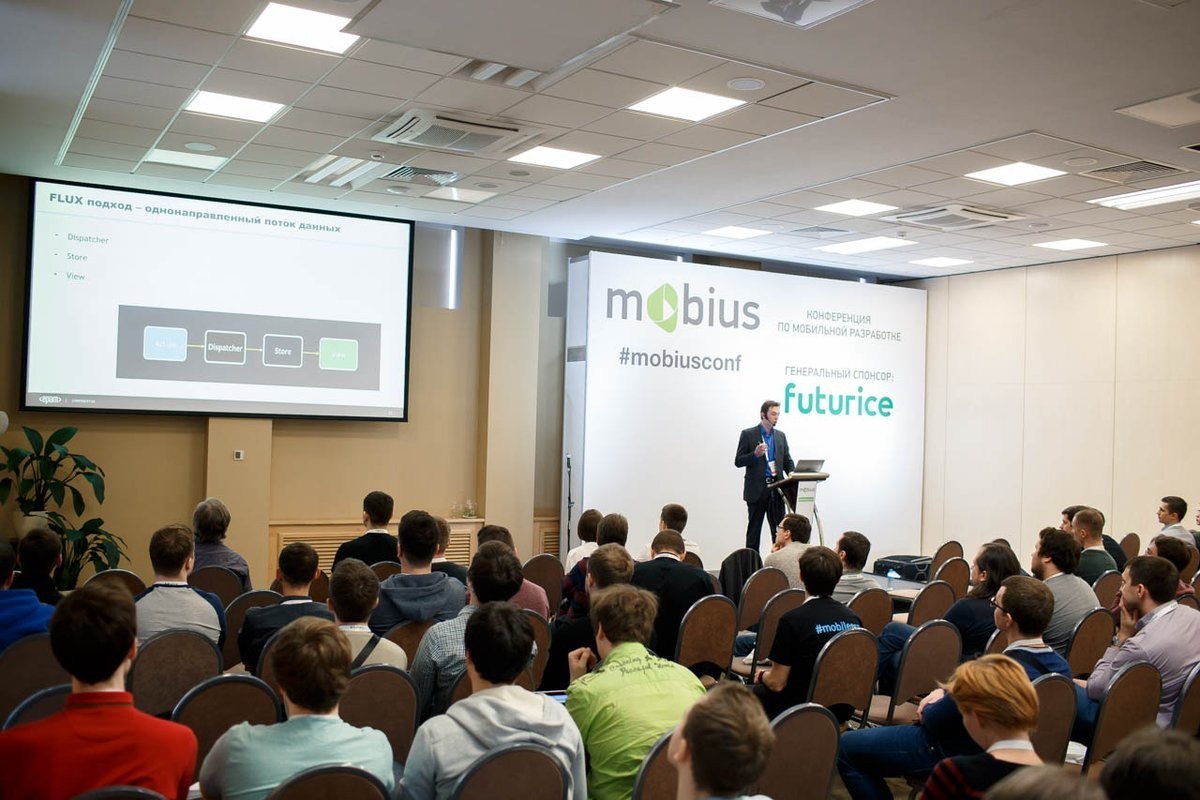
Following Vladimir Ivanov (EPAM) already immersed in the subject deeply, with code and solving specific problems. Perhaps, in a certain sense, even too deeply: his report was designed primarily for those who tried the technology personally, and on the issues after the report it was possible to understand that many people are still theoretically interested in it. The following report by Dmitry Yevstratov and Daniil Kalintsev , who told about their experience of using React Native in Sberbank Technologies, could help such viewers to some extent.
Architecture
Mobius had a number of architectural reports, one of which also had an unusual appearance story. Android developer Yevgeny Matsyuk (Kaspersky Lab), having conceived the report “Clean Architecture”, published the “Architectural Pain Manifesto” on Habré, calling to share his pain in a specially created Telegram-chat . In just a few months, the chat has grown to 700 participants, which no one expected, and spawned so many discussions that only a small part of what they wanted could fit the resulting joint report by Yevgeny and Alexander Blinov (REDMADROBOT). Nevertheless, they managed to say a lot about “pure architecture” by itself (“many people ask if it is possible to remove a layer from a feature, they usually want to remove the interactor where there is no great benefit from it, but I personally support trade-off in consistency benefit ”), and how to incrementally change an already existing project in its direction.

And the discussions did not end after the presentation of the report. Chat continues to live actively, and in the lobby of Mobius on the second day you could see how Matsyuk and Blinov were actively discussing the architecture with another speaker Fernando Sejas , to whose blog Matsyuk initially referred to in his Manifesto. The circle is closed!
Another “architectural” speaker, Denis Neklyudov (90Seconds), also manages the Telegram-chat for hundreds of people - this is the “Android Dev” podcast chat . And right on Mobius, a group of speakers using Hangouts arranged the release of this podcast. Unfortunately, the sound problems prevented the audience from enjoying the release - but at least all those involved would get a lot of pleasure:
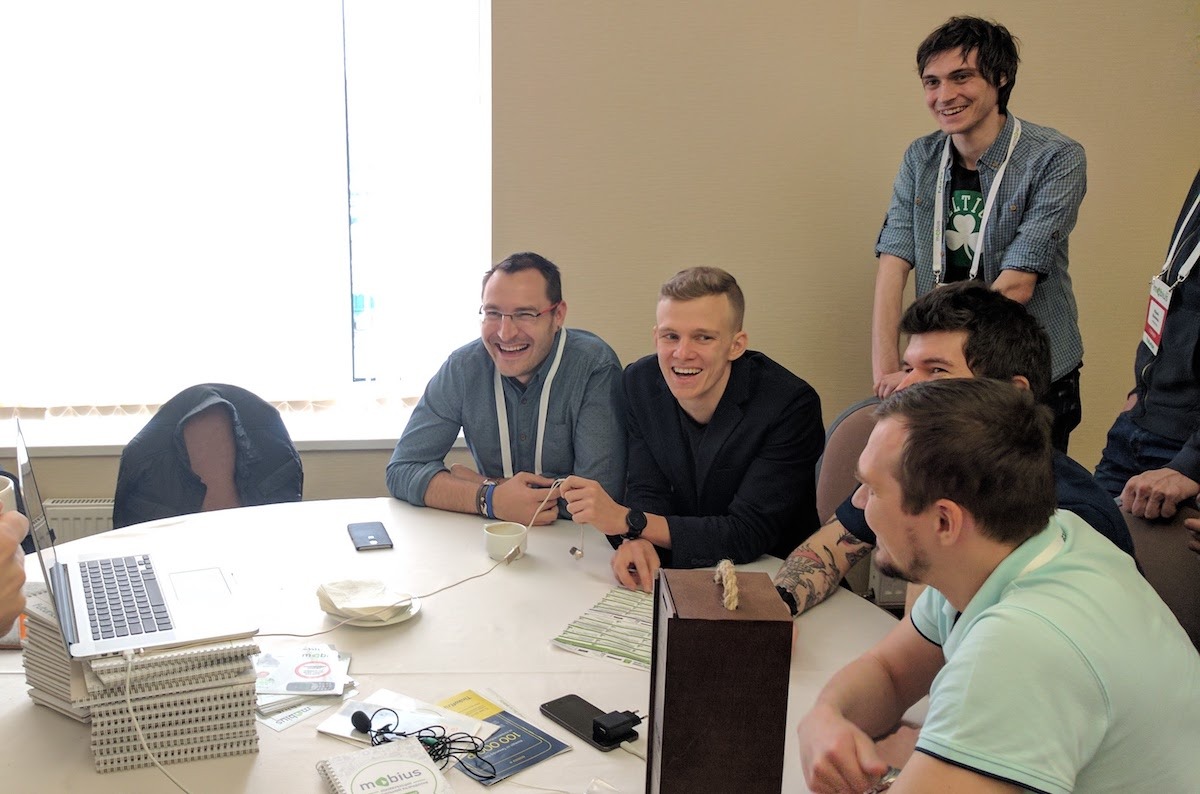
We asked Denis why everyone is now eager to discuss architecture, and his version turned out to be like this: “A couple of years ago, at mobile conferences, we talked a lot about some specific issues like displaying pictures, but now these things are considered solved problems. Therefore, there was a transition to architectural themes. ”
And speaker Anton Cake found another version:
Kotlin
At last year's Mobius about Kotlin there was one report with the “introductory” theme of “Android apps on Kotlin: why it’s good,” and the speaker was then from JetBrains. This time the company was present at the conference as a sponsor, and representatives of the Kotlin team willingly answered questions about him, but in the Android reports, without the participation of JetBrains, everyone willingly spoke about the language - moreover, now there is no “there is such a language” in the introductory format, but parsing specifics.
Danny Prousler talked about using Kotlin in tests, brothers Anton and Philip Cakes presented Kotlin-puzzlers, Denis Neklyudov and Stepan Goncharov in their architectural report Kotlin featured as an important component - and these are only those cases where the language was pronounced directly in the title of the report not mentioned in passing.

And when such reports were asked “who uses Kotlin in production,” a lot of hands were raised, so the audience gathered not out of academic interest. In general, it was obvious that over the past year, Kotlin in the Android environment made a huge jump in popularity.
That's curious. Most recently, the Kotlin / Native project was presented, one of the platforms for which is iOS. Over the long term, JetBrains are aiming at a cross-platform mobile development that allows them to write the same language for both main platforms and reuse code (in some sense competing with the same React Native). And now, when in the Android world it has already obviously turned out to achieve a lot, a new challenge for the company arises: will it be possible for it to ensure that the future Mobius speaks about the language not only for one platform?
Swift
Although the analogy of “Kotlin for Android is like Swift for iOS” is not quite correct, it’s difficult to avoid comparisons. While Android is increasingly using the first language, in the iOS world the second one really swung, and the conference clearly reflected this. As in the case of Kotlin, if there was one report on the previous Mobius about the language ( “Advanced Swift Generics - let's move on to T” ), then this time - as many as three: about performance, testability and using Swift for scripts.
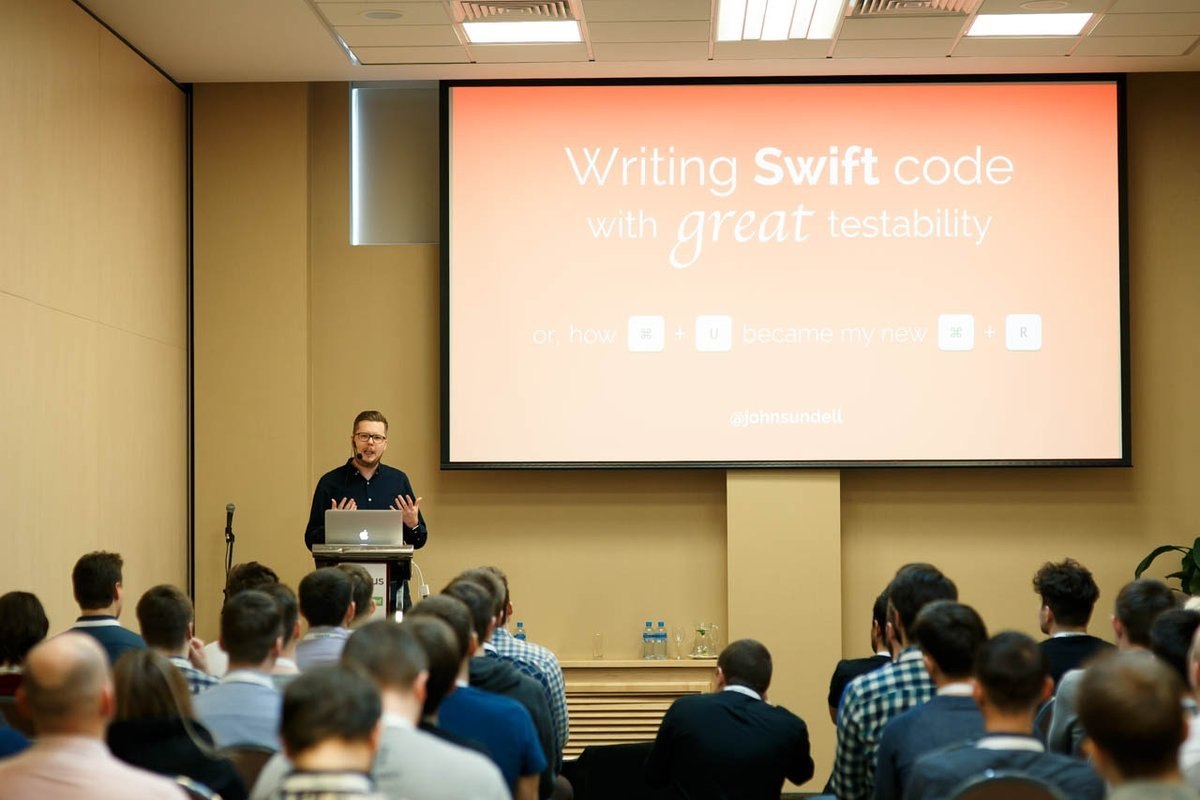
When we asked several speakers a year ago before the previous Mobius, how things were going with Swift in their companies and what they would advise others, there was a lot of caution in the answers: “there are both advantages and disadvantages”, “if the new project is very large and long-playing - I personally still lean towards Objective-C. ” Now it didn’t happen: when we asked iOS speakers in the online broadcast, “Does it make sense to start a new project in Objective-C in 2017”, they only had specific cases (for example, when everything is tied to interop with C ++).
However, Igor Kashkut (Badoo), who told us a year ago, “version 3.0 will be a truly normal version 1.0,” adjusted his forecast: since Apple has since changed plans and postponed ABI stability to 4.0, now Igor believes that “version 4.0 will be truly normal version 1.0. ” It will be necessary to remember to clarify his position in a year on Mobius 2018!
And in the report by Nikolai Lihogruda from Yandex, who talked about optimizing the boot time of iOS applications, it was noted that until Swift completely stabilized and became part of iOS, it slightly increases the load time compared to Objective-C. It is unlikely that the difference will be critical for many, but the moment is curious and unobvious.
In addition to trends
There were also speeches that were not built into any big trend, but turned out to be interesting because they looked at mobile development through the prism of their specificity. For example, Philip Keks (Creative Mobile), who deals with games, told why advertising statements about the "performance of new smartphones at the level of consoles" do not correspond to reality. Measuring the standard duration of a gaming session, estimating the probability of overheating and determining how much the device can be loaded, came to an unexpected conclusion in Creative Mobile: if new smartphones like the Galaxy S8 were equipped with less powerful components, then in practice you could squeeze more out of them. Overheating is relevant not only for games: Alexander Korshak told about 360-degree video and VR on Mobius, and earlier he told us in an interview that this issue is also very painful there.
And the conference ended with a presentation in which mobile development was also viewed from a different angle. Jonathan Levin (KolGene) is both a developer and a start-up, so he sees the situation from two perspectives: technological and product. And if his first report on Mobius 2017 was about what is happening inside the Android platform, then the closing keynote “How to make a product out of your application” is about what is happening outside. A lot of laughter in the hall was caused by the phrase Jonathan, sarcastically showing the separation of the first from the second:
“You make the application for a long time and diligently, finally upload it to the store, and no one installs it. And you are thinking: how is it that they don’t want it, RxJava is there! ”
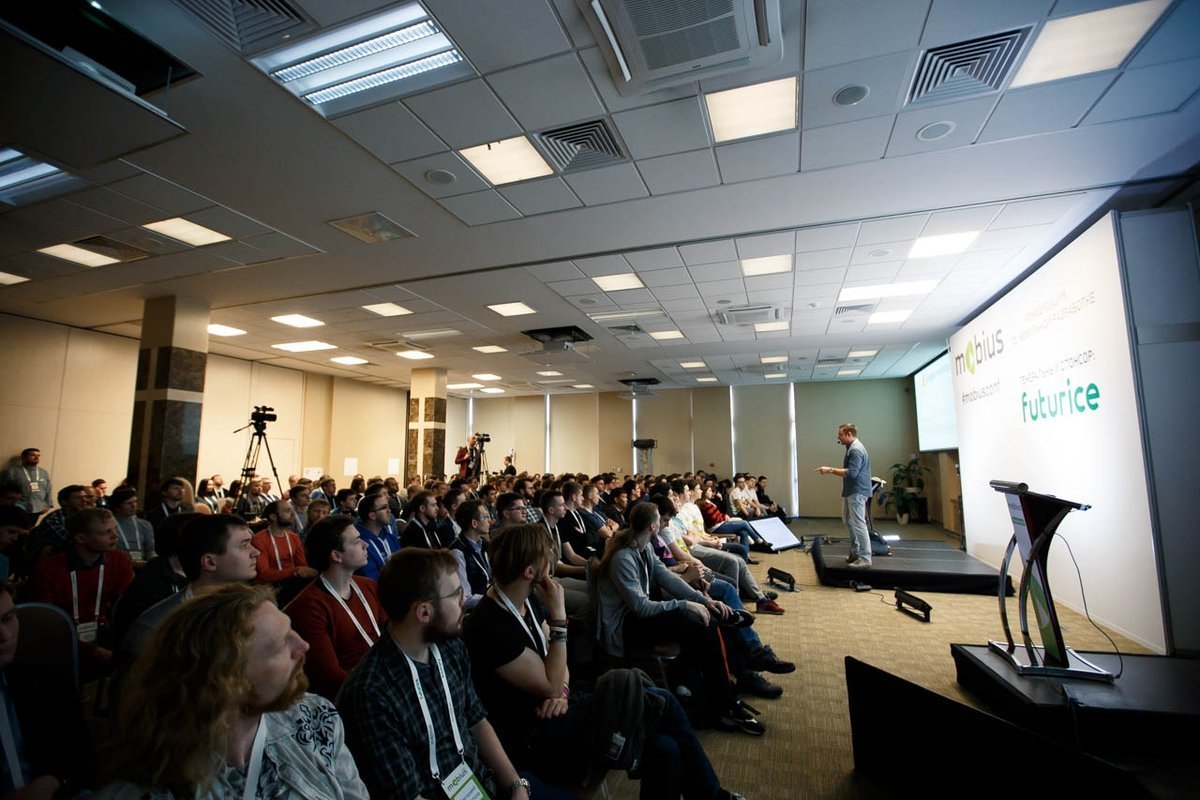
Indeed, listening for two days in a row about technologies like the same RxJava, after a lot of useful information, you can forget about what worries the end user. And in such a mass-oriented industry as mobile development, it is especially important not to forget: in the end, all technological trends are for people, not people for trends.
Source: https://habr.com/ru/post/327562/
All Articles